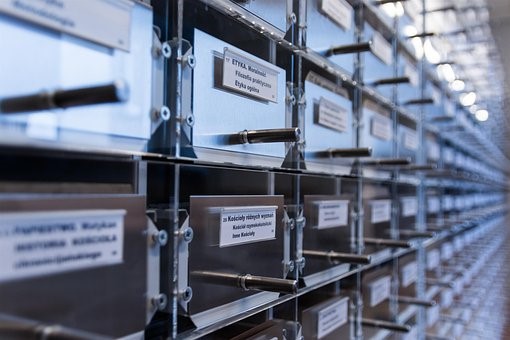How a Library Catalog System Can Help Your Library Grow and Thrive?

Are you looking for a way to help your library grow and thrive? Believe it or not, one of the most effective tools that you can use is a library catalog system. A library catalog system can do more than just store information; it allows patrons easier access to the resources they need, keeps all of their records organized, and gives administrators greater control over the institution’s offerings. If you’re looking for a way to give your library an edge in these challenging times, read on to learn how implementing an efficient and powerful library catalog system could be exactly what you’re missing.
Overview of a library catalog system and how it can help you organize your library’s resources
A library is an invaluable resource for students, researchers, and avid readers. However, finding the right resource can be a daunting task without the proper tools. This is where a library catalog system comes in. A library catalog system is a database that allows you to search for books, articles, and other materials based on different criteria such as author, title, or subject. With the help of a library catalog system, you can organize your library’s resources and make them more accessible to your patrons. This system not only saves time but also helps in improving the overall efficiency of library management. So, whether you are a student studying for an exam or just someone who loves to read, a library catalog system is an essential tool that can help you locate the resources you need to achieve your goals.
Benefits of a library catalog system, such as improved access and flexibility
In the modern era of technology and information overload, a library catalog system has become a valuable tool for managing an extensive range of books, documents, and other library materials. Beyond the traditional use of a card catalog, a library catalog system provides endless benefits. A well-designed library catalog system has improved the accessibility of library materials to patrons, allowing them to quickly and efficiently find what they’re looking for. Additionally, the system enables libraries to catalog and manage a vast amount of information, including books, videos, audiobooks, and periodicals, all in one place. With the help of a catalog system, librarians can easily track circulation across materials and better manage the library’s inventory, thereby enhancing library users’ experience. Therefore, a library catalog system, coupled with the latest technology tools, is an integral part of enhancing library access to patrons and is a must-have for all modern libraries.
Types of library catalog systems available and their different features
When it comes to library catalog systems, there are a variety of options available to help organize and manage collections of books and other materials. Some systems, such as Koha and Evergreen, are open-source and provide a wide range of customizable features, including support for multiple languages and metadata formats. Other systems, like OCLC WorldCat, offer powerful search capabilities that allow users to find resources outside of their library system. Some systems offer mobile and web-based interfaces for easy access, while others prioritize data security and compliance with library standards. No matter which system you choose, it’s important to carefully consider your library’s needs and goals to ensure that you select the best fit for your organization.
How to choose the best catalog system for your library
Choosing the best catalog system for your library is a critical task as it can determine how effectively your library functions. With so many options out there, it might seem like an overwhelming task. However, with the right approach, you can make a confident and informed decision. Start by identifying the specific needs of your library, such as the type of materials you deal with, the size of your collection, and the needs of your patrons. Next, consider factors such as ease of use, customization options, and technical support. Don’t forget to check for compatibility with your existing systems as well. By taking the time to research all the options and understand your library’s needs, you’ll be well on your way to choosing the best catalog system that will help your library function at its best.
Tips for successfully deploying a new library catalog system
Deploying a new library catalog system can be an intimidating process. However, with the right approach and a solid plan, you can successfully upgrade your library’s technology with ease. One tip is to ensure that your staff is properly trained on the new system before it goes live. This will minimize confusion and ensure that your team can confidently assist patrons with any questions they may have. Additionally, make sure to thoroughly test the system before deployment to catch any potential issues. Finally, communicate with your library users about the upcoming changes, providing information on the benefits of the new system and what they can expect during the transition. A well-executed plan will set your library up for success with an updated and efficient catalog system.
Examples of libraries that have implemented successful catalog systems
Libraries across the globe are continuously striving to enhance their catalog systems to provide better access to their collection of resources. While the task may seem daunting, numerous libraries have managed to achieve successful implementations. One such library is the Library of Congress, which utilizes a comprehensive and user-friendly system that has been embraced by its patrons. Another example is the Seattle Public Library, which offers an intuitive interface that allows for easy navigation and advanced search functionalities. By studying successful catalog systems, libraries can adapt and implement their systems to provide an enhanced user experience.
Implementing a catalog system can be daunting, but with careful investigation and thoughtful implementation, libraries can create a foundation of dependable technology that will help their patrons find and access the library’s resources. With the right system in place and support from staff, these systems can become integral parts of library processes for years to come. Libraries must also be willing to invest the time in the beginning to create a robust catalog system that will best serve their needs for years. With the right strategy and an eye on the best goals, libraries can easily enjoy all the benefits of having a catalog system in their library.









